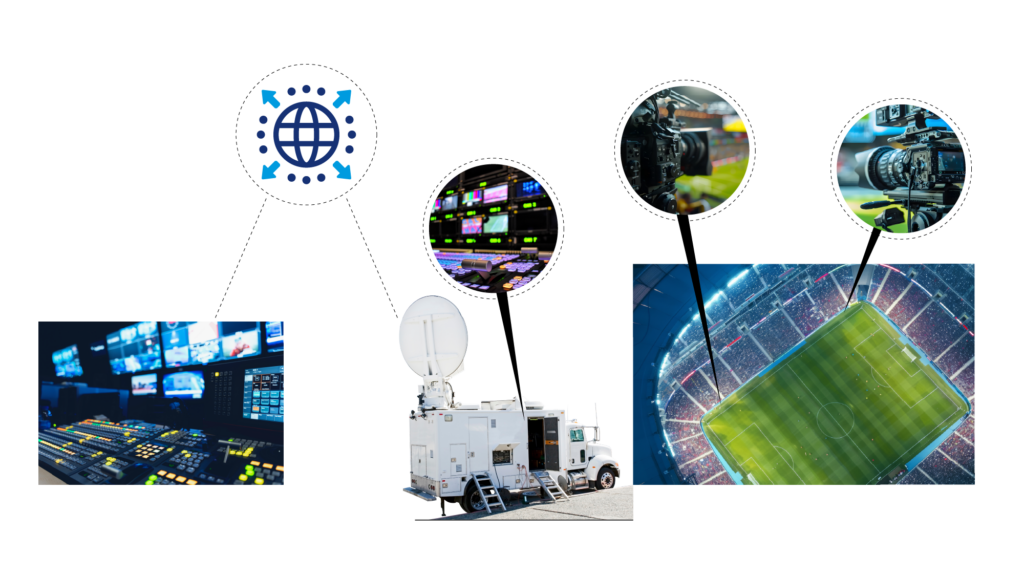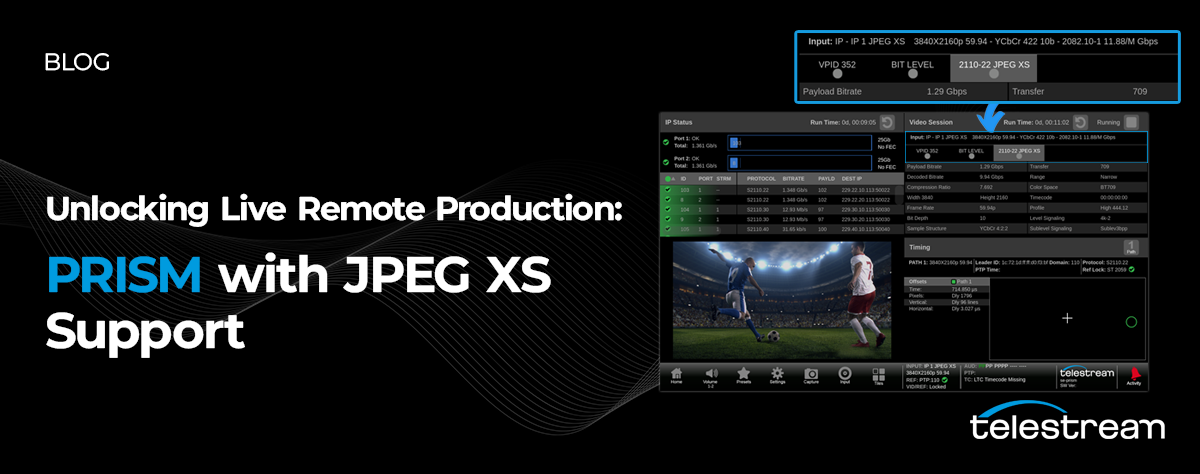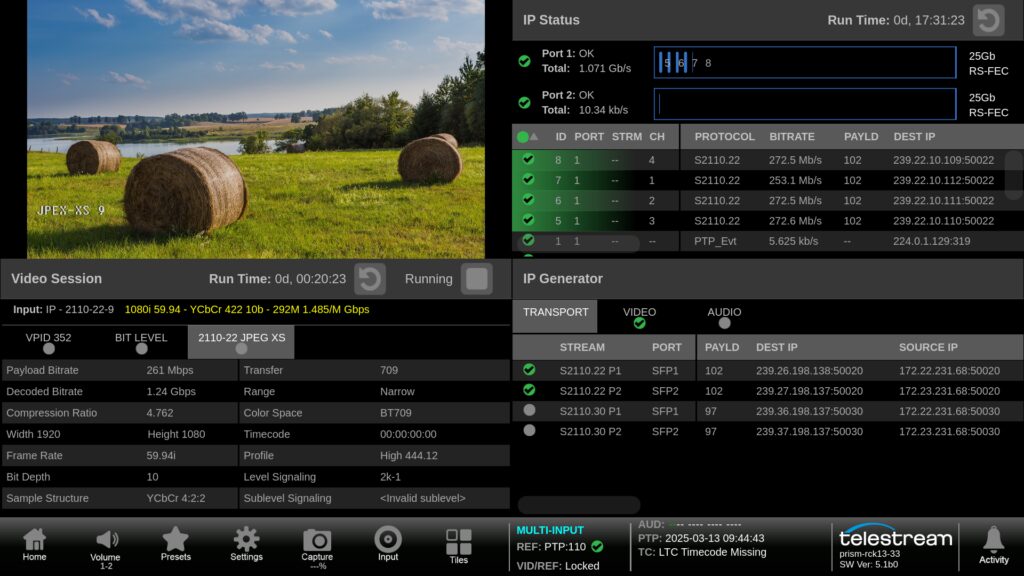As the demand for content continues to grow, content distributors require increasingly larger volumes of content to distribute. High-value content creation often justifies the use of multiple OB trucks with 40+ camera systems, multiple operators, engineers, and staff, including commentators. However, for mid-value content production, there’s a pressing need to optimize costs without compromising the quality of the content.
Challenges in Remote Production
Remote production workflows are gaining significant traction, offering substantial cost and time savings compared to traditional live production. While camera crews need to be on-site, directors and commentators can remain at the facilities, dramatically reducing travelling expenses. Furthermore, teams based at the facility can work on multiple back-to-back events in a single day, making resource usage more efficient.
However, one challenge is the high cost of the network infrastructure required to transmit all camera feeds back to the facility for production. A single UHD stream can consume around 10 Gbps of bandwidth. For a project with 20 UHD cameras, this could require more than 200 Gbps of data, which could prove prohibitively expensive. This is where compression technology plays a crucial role and JPEG XS was standardized in SMPTE ST2110-22 for use in IP media networks.

Figure 1 Remote Production: Camera operators and small staff on site with Directors and primary production at remote facility location.
Network Cost Reduction with JPEG XS Compression
JPEG XS was specifically designed to reduce bitrates by 4 to 20 times without noticeable quality loss, while maintaining very low latency. For UHD video, JPEG XS can compress a UHD stream down to 2 to 3 Gbps, allowing a single 10GE pipe to carry 3 to 4 compressed UHD streams. For HD content, a single 10GE pipe can carry over 20 compressed HD video streams, significantly reducing the overall cost of the project. Importantly, the low latency that JPEG XS technology offers is vital for live sports production workflows.
JPEG XS Support in Telestream PRISM
While JPEG XS technology helps to reduce system costs, it typically requires multiple JPEG XS encoders and decoders on both the sender and receiver sides, which can complicate the system setup.
The Telestream PRISM SDI/IP waveform monitor supporting hybrid SDI and IP broadcast workflow now integrates JPEG XS Encoder and Decoder powered by IntoPIX. This integrated decoder enables the PRISM to receive JPEG XS streams directly, allowing it to display and analyze the picture without requiring an external decoder box. This not only reduces costs but also streamlines the workflow.
Additionally, PRISM introduces a new JPEG XS metadata analysis feature that displays metadata for the header portion of the receiving stream. This feature is invaluable for identifying potential interoperability issues within the system. The PRISM also supports JPEG XS test signal generation, allowing engineers to quickly evaluate the signal path with ease.
Figure 2 PRISM JPEG XS 4x Decoding, Analysis and Generation
PRISM for Remote Production
With JPEG XS support, PRISM allows users to monitor not just SDI and ST 2110-20 signals, but also ST 2110-22, accommodating up to four inputs. This is ideal for remote production that require true hybrid system configurations. By consolidating essential monitoring and conversion tools into a single unit, PRISM reduces the need for multiple pieces of equipment, simplifying operations and enabling broadcasters to focus on delivering exceptional live content.
Discover How PRISM Can Transform Your Remote Production Workflows
To learn more about how PRISM can enhance your remote production workflows, visit our website.
PRISM customers can download version 5.1 with JPEG XS and additional new enhancements from the PRISM resources page.


